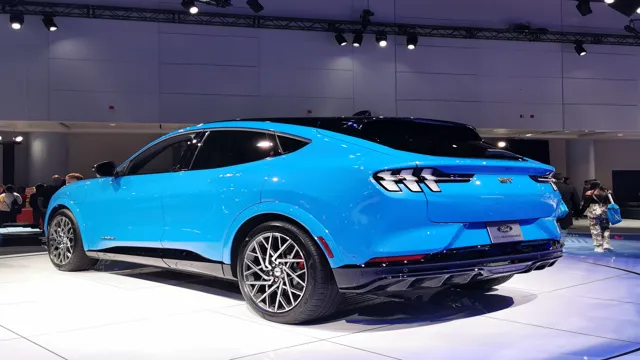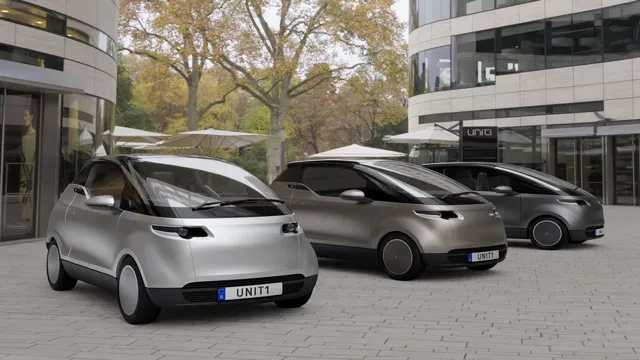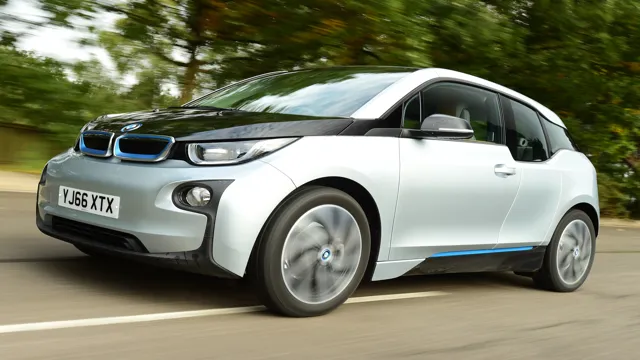Revving Up: The Latest Rankings and Reviews of Electric Cars in the US
US News & World Report has long been a trusted authority for rankings across various sectors, from education to healthcare. In recent years, its automotive division has gained prominence, offering consumers detailed rankings of cars available in the US market. The US News Cars Ranking system is designed to simplify the car-buying process by evaluating vehicles based on a range of critical factors, helping buyers make informed decisions. This article explores what these rankings are, how they are determined, highlights some top performers, and examines the trends and impacts they reveal about the automotive landscape.
What is the US News Cars Ranking?
The US News Cars Ranking is a comprehensive assessment of vehicles sold in the United States, organized into categories such as sedans, SUVs, trucks, and electric vehicles (EVs). These rankings aim to guide consumers by assigning each model a score based on expert reviews, safety ratings, reliability data, and cost-of-ownership metrics. Updated regularly to reflect new models and industry changes, the rankings ensure that buyers have access to current and relevant information.
The rankings are broken down into several practical categories, including:
- Best Cars for the Money
- Best Cars for Families
- Best Vehicle Brands
- Overall Best Cars in specific classes (e.g., compact cars, luxury SUVs)
This segmentation allows consumers to focus on what matters most to them—whether it’s affordability, family-friendly features, or brand reputation—making the rankings a versatile tool for car shoppers.
How Are the Rankings Determined?
The methodology behind the US News Cars Ranking is both rigorous and multifaceted, combining quantitative data with qualitative insights for a balanced evaluation. The key factors include:
- Expert Reviews
US News aggregates opinions from professional automotive journalists and publications. These reviews assess a car’s performance, comfort, technology, and overall driving experience. - Safety Ratings
Safety is a cornerstone of the rankings. Data from the National Highway Traffic Safety Administration (NHTSA) and the Insurance Institute for Highway Safety (IIHS) is used to evaluate how well a vehicle protects occupants in a crash. - Reliability Data
Reliability scores, sourced from organizations like J.D. Power, predict a car’s long-term durability—a critical consideration for many buyers. - Resale Value and Cost of Ownership
Long-term financial factors, such as depreciation, fuel efficiency, insurance costs, and maintenance expenses, are factored in to assess a vehicle’s overall value.
These elements are weighted and combined to generate an overall score for each vehicle. Cars are then ranked within their respective categories based on these scores. US News provides transparency by explaining its methodology, empowering consumers to understand the basis of each ranking.
Highlights from the Rankings
The US News Cars Ranking spans a wide variety of vehicle types, with top performers varying by category. Here are some standout examples:
- Best Compact Cars: The Honda Civic frequently tops this category, lauded for its blend of performance, fuel efficiency, and affordability.
- Best Midsize SUVs: The Hyundai Palisade shines here, offering a spacious interior, advanced safety features, and excellent value.
- Best Luxury Compact SUV: The BMW X3 often takes this title, combining sporty handling with a luxurious interior and cutting-edge technology.
- Best Electric Cars: The Tesla Model 3 dominates, thanks to its impressive range, performance, and innovative features.
These highlights showcase the diversity of the rankings, catering to different buyer needs—from budget-conscious shoppers to those seeking luxury or sustainability.
Trends and Patterns in the Rankings
The US News Cars Ranking reveals several trends that reflect the evolving automotive industry and consumer preferences:
- The Shift Toward SUVs and Crossovers
Over the past decade, SUVs and crossovers have surged in popularity, often scoring high for their versatility and family-friendly features. - The Rise of Electric and Hybrid Vehicles
Electric vehicles (EVs) and hybrids are increasingly prominent, driven by advances in battery technology and growing environmental awareness. Models like the Ford Mustang Mach-E and Hyundai Ioniq 5 have made strong showings. - Emphasis on Safety and Technology
Vehicles with advanced driver-assistance systems (ADAS)—such as automatic emergency braking and lane-keeping assist—tend to rank higher, reflecting consumer demand for safety and innovation. - Brand Consistency
Brands like Toyota and Honda excel in reliability, while luxury marques like BMW and Mercedes-Benz dominate in performance and prestige.
These patterns not only mirror buyer priorities but also influence how automakers design and market their vehicles.
Impact on the Automotive Industry and Consumers
The US News Cars Ranking has a dual impact—on consumers and the automotive industry.
For Consumers
The rankings simplify the car-buying process by offering a clear, data-driven comparison of models. Whether prioritizing safety, cost, or performance, buyers can use the rankings to narrow their options efficiently.
For Manufacturers
A high ranking can boost a model’s visibility and sales, while a lower ranking may highlight areas for improvement. The focus on reliability and resale value pushes automakers to prioritize quality and customer satisfaction. As a US News & World Report spokesperson noted, “Our rankings reflect the real-world concerns of car buyers, and we’ve seen growing interest in electric vehicles and safety features.”
This interplay suggests that the rankings are more than a consumer tool—they’re a market force shaping industry trends.
Conclusion
The US News Cars Ranking is a powerful resource that distills complex automotive data into an accessible format for buyers. By blending expert reviews, safety ratings, reliability scores, and cost metrics, it offers a holistic view of each vehicle’s strengths. Trends like the rise of SUVs, EVs, and advanced safety features highlight the dynamic nature of the industry, while top performers like the Honda Civic and Tesla Model 3 exemplify excellence in their categories.
For car shoppers, the rankings provide a solid starting point. However, personal needs—such as lifestyle, budget, and driving habits—should complement the data. As the automotive world evolves, the US News Cars Ranking remains a key guide, helping consumers navigate the road ahead with confidence.
FAQs
1. What is the US News Cars Ranking?
The US News Cars Ranking is a detailed evaluation system for vehicles sold in the United States. It ranks cars, SUVs, trucks, and other vehicles based on factors such as expert reviews, safety ratings, reliability data, and cost-of-ownership metrics. The goal is to help consumers make informed decisions by offering a comprehensive assessment of each vehicle’s strengths and weaknesses.
2. How are the rankings determined?
The rankings use a thorough methodology combining quantitative data and qualitative insights:
- Expert Reviews: Opinions from professional automotive journalists, aggregated to evaluate performance, comfort, technology, and driving experience.
- Safety Ratings: Scores from the National Highway Traffic Safety Administration (NHTSA) and the Insurance Institute for Highway Safety (IIHS) assessing crashworthiness and safety features.
- Reliability Data: Predictions of long-term durability from sources like J.D. Power.
- Cost of Ownership: Metrics including depreciation, fuel efficiency, insurance costs, and maintenance expenses to measure long-term value.
These factors are weighted and combined into an overall score, which determines a vehicle’s rank within its category.
3. What categories are included in the rankings?
The rankings cover several consumer-focused categories, such as:
- Best Cars for the Money: Vehicles offering the best combination of quality and affordability.
- Best Cars for Families: Models with family-oriented features like space, safety, and entertainment systems.
- Best Vehicle Brands: Rankings of brands based on the overall quality of their vehicle lineups.
- Overall Best Cars: Top performers in specific classes, such as compact cars, luxury SUVs, trucks, and electric vehicles.
4. How often are the rankings updated?
The rankings are updated regularly to incorporate new vehicle models, industry changes, and the latest data, ensuring consumers have access to current and relevant information.
5. Why are the rankings significant for car buyers?
The rankings provide a data-driven comparison of vehicles, making it easier for buyers to identify models that excel in areas like safety, reliability, and value. They help narrow down options based on specific needs—whether budget, family requirements, or performance—streamlining the car-buying process.
6. What are some examples of top-performing cars in the rankings?
Examples of standout vehicles include:
- Best Compact Cars: Honda Civic – Known for its performance, fuel efficiency, and affordability.
- Best Midsize SUVs: Hyundai Palisade – Praised for its spaciousness, safety, and value.
- Best Luxury Compact SUV: BMW X3 – Noted for sporty handling, luxury, and advanced tech.
- Best Electric Cars: Tesla Model 3 – A leader in range, performance, and innovation.
7. What trends do the rankings reveal about the automotive industry?
The rankings highlight key trends, including:
- Rise of SUVs and Crossovers: Popular for their versatility and family-friendly design.
- Growth of Electric and Hybrid Vehicles: Models like the Ford Mustang Mach-E and Hyundai Ioniq 5 reflect increased demand for sustainability.
- Focus on Safety and Technology: Vehicles with features like automatic emergency braking and lane-keeping assist often rank higher.
- Brand Performance: Brands like Toyota and Honda lead in reliability, while luxury brands like BMW excel in performance.
8. How do the rankings impact the automotive industry?
The rankings affect both consumers and manufacturers:
- For Consumers: They offer a trusted tool for vehicle comparison and decision-making.
- For Manufacturers: High rankings can boost a model’s sales and visibility, while lower rankings may push automakers to improve quality, safety, or value.
9. How should I use the rankings when buying a car?
To make the most of the rankings:
- Identify Priorities: Focus on categories that match your needs, like affordability or safety.
- Test Drive: Use the rankings to shortlist options, then test drive to evaluate comfort and handling.
- Factor in Lifestyle: Consider personal needs—like commuting distance or family size—that may not be fully reflected in the rankings.
- Stay Updated: Check the latest rankings for the most current data.
By pairing the rankings with your own research and preferences, you can choose a vehicle that best fits your situation.







